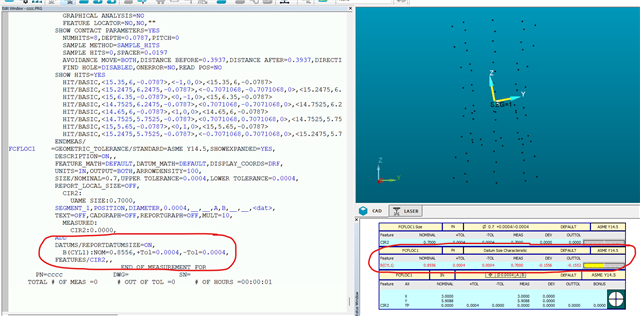Your Products have been synced, click here to refresh
Your Products have been synced, click here to refresh
Not exactly, as far as I know, doesn't like constructing the circle. There's a super-cumbersome way to do it, though (this also makes applicable datum features ASME correct).
In this example, let's assume you want a female cylinder constrained perpendicular to a plane: project each and every point in cylinder up to the plane. Make a feature set. Now make your max inscribed circle off that feature set.
Let's assume you want a female cylinder constrained perpendicular to a plane: project each and every point in cylinder up to the plane. Make a feature set. Now make your max inscribed circle off that feature set.
I also use it in ISO world...
If you use the geometric tolerance command, you can make the plane the primary datum and the cylinder the secondary datum. You can then report position of any other feature back to the primary datum plane and secondary datum cylinder and look at the datum sizes.
This is a test I did with a dataset I created - hourglass shape that was Ø0.7 inches at it's smallest point. My primary datum plane is inclined 10° about the X axis (this can be any angle) and you can see that the secondary datum size shows 0.7 inches - for this particular scenario, you ignore everything else since it is only the cylinder UAME size when it's orientation is constrained to to the plane that we are interested in.

For ASME, datums are always constrained in both orientation and location. For ISO, datums are constrained in orientation only.
Can't comment on latest version, but results were still slightly different in 2021 (test focused mostly on gross perpendicularity error), between canned PC-DMIS FCF method and what I described. I'll continue micromanaging everything.
| © 2025 Hexagon AB and/or its subsidiaries. | Privacy Policy | Cloud Services Agreement |